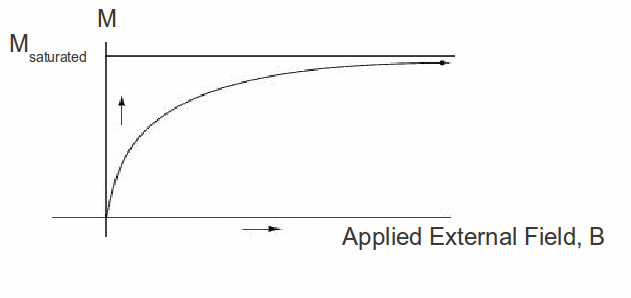Ferromagnetic materials are the materials used to make permanent magnets. The can display a magnetic field in the absence of an external field. Ferromagnetic materials include iron, cobalt, nickel and alloys of these materials are also ferromagnetic.
In these materials, strong interactions between atomic magnetic moments cause them to line up parallel to each other in regions called magnetic domains, as shown below even when no external field is present. Within each domain, nearly all the atomic magnetic moments are parallel.
When there is no externally applied field, the domains are randomly oriented. When a field vec B is present, the domains tend to align themselves parallel to the field. The domain boundaries also shift – the domains that are oriented with the field expand and domains not oriented shrink. The magnetic moment of a domain may be many thousands of Bohr magnetons so the torques that align the domain with any external field is very strong: the relative permeability is typically 1000-10000. As the external field is increased a point is reached at which nearly all the magnetic moments in the material are aligned parallel to the external field. No increase in magnetization can be caused by increasing the magnetic field. This is illustrated below.

